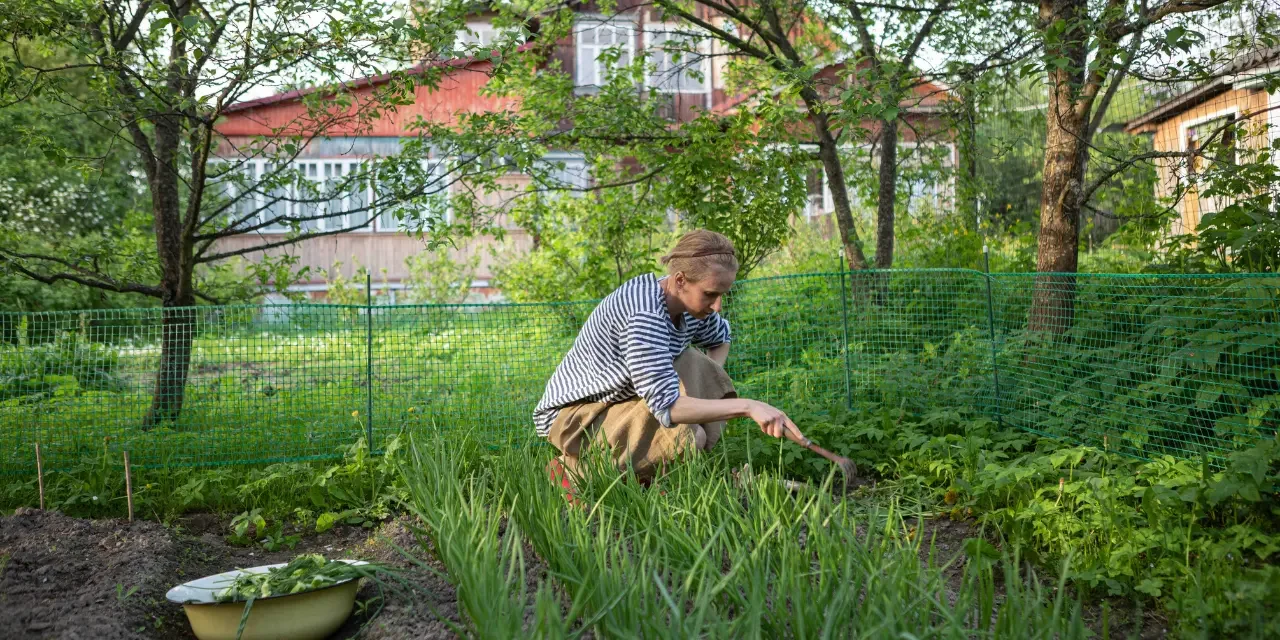With nearly 2 billion people relying on small-scale farming, agroforestry is emerging as a transformative solution to achieve food security, improve livelihoods, and protect our environment. As a sustainable land use system, it promotes the integration of trees, crops, and/or animals on the same piece of land. This practice enhances overall productivity while supporting environmental stability. In this comprehensive guide, we explore what agroforestry is, its core components, benefits, limitations, and the importance of homestead agroforestry—especially for low-income families in rural areas.
What is Agroforestry?
Agroforestry is a sustainable land management system that increases overall land productivity by combining or integrating agricultural crops, tree crops, forest plants, and/or animals, either simultaneously or sequentially. It follows management practices that align with the cultural beliefs and values of the local population (Bene et al., 1977). According to Nair (1979), agroforestry is a land use system where trees, crops, and animals are scientifically integrated in a way that is environmentally acceptable, practically feasible, and socially acceptable to farmers.
Key Features of Agroforestry
- Involves two or more species, where at least one is a perennial woody plant like a tree or shrub.
- Generates multiple outputs (such as fruits, vegetables, fuelwood, timber, and animal products).
- Offers a complex yet productive system that is more beneficial than monoculture farming, both economically and environmentally.
Components of Agroforestry Systems
The sustainable land use systems generally consist of the following three key components:
1. Trees and Perennial Woody Plants
These include fruit trees, timber trees, shrubs, or multipurpose species used for food, fuel, or medicinal purposes.
2. Seasonal or Annual Agricultural Crops
Examples include rice, wheat, maize, vegetables, and pulses cultivated annually or seasonally for food or market value.
3. Livestock and Aquaculture
The inclusion of animals like cows, goats, poultry, and fish adds diversity and strengthens food security and income generation.
Any combination of two or all three of these components constitutes this productive system. However, trees are a mandatory and multipurpose element in every successful model.
Benefits of Agroforestry
Implementing agroforestry methods offers a wide range of economic, ecological, and social benefits. Some key advantages include:
1. Maximum Land Utilization
This Mixed land-use system enables the optimal use of every part of the land, ensuring that no space goes to waste.
2. Multi-layered Production
Farmers can simultaneously produce grains, vegetables, fodder, organic manure, timber, fruits, fish, meat, eggs, and milk from the same land.
3. Soil Improvement
The presence of diverse crops and trees enhances soil fertility and improves its physical, chemical, and biological properties.
4. Reduced Risk of Crop Failure
This Integrated farming systems are more resilient than monocultures, reducing the risk of total loss due to pests, diseases, or climate events.
5. Synergistic Interactions
Interactions between crops, trees, livestock, and fish often result in mutual benefits, improving overall farm productivity.
6. Protection Against Natural Disasters
Tree canopies act as windbreaks and protect crops and homes from storms and floods.
7. Livelihood Improvement
By offering multiple income streams, this kind of diversified farming model helps reduce unemployment and improves living standards.
8. Environmental Enhancement
It enhances the aesthetic and ecological value of homesteads, supports biodiversity, and contributes to environmental conservation through carbon sequestration and erosion control.
Limitations and Challenges of Agroforestry
Despite its benefits, agroforestry faces several challenges, especially when systems are poorly planned or managed.
1. Resource Competition
Improperly selected tree and crop combinations may compete for sunlight, water, and nutrients, reducing overall yields.
2. Cross-contamination of Diseases
Diseases can transfer between trees and crops, complicating pest and disease management.
3. Higher Water Demand
Some agroforestry systems may require more irrigation, particularly in drier regions.
4. Physical Damage During Tree Harvesting
Tree harvesting may inadvertently damage nearby crops or valuable plants.
5. Complicated Land Management
The presence of multiple species makes land preparation and maintenance more labor-intensive and time-consuming.
6. Increased Labor Needs
Managing an agroforestry system often demands more labor, which can be costly or hard to find in some regions.
7. Lack of Awareness
Many communities still lack sufficient knowledge or training in implementing well-planned agroforestry systems.
Homestead Agroforestry: A Traditional and Sustainable Model
What is Homestead Agroforestry?
Homestead agroforestry refers to the practice of integrating trees, crops, and animals within the homestead area. It is one of the oldest and most traditional forms of agroforestry, designed primarily to meet the daily needs of the household. Also known as subsistence agroforestry, this model is particularly beneficial for small, low-income, or landless families.
Key Features:
- Utilizes limited homestead land efficiently.
- Focuses on food security, nutrition, and income.
- Promotes diversity and sustainability.
Structure of an Ideal Homestead Agroforestry System
Although most homesteads have some elements of agroforestry, they often fail to yield optimal results due to poor planning. As a result, even though the concept is old, it is often overlooked. However, with proper planning, homestead agroforestry can meet a family’s food requirements. The following points should be considered when building an ideal homestead agroforestry system:
- Fencing Plants: Plant trees like Mandar, Verenda, Palash, and Jiga along the boundary for fencing and protection.
- Courtyard Vegetables: Grow seasonal vegetables in the courtyard for daily consumption.
- Fruit & Medicinal Trees: Plant trees like mango, blackberry, jackfruit, litchi, guava, wood apple, papaya, neem, bohera, haritaki, tulsi, moringa, coconut, betel nut, Bakul, etc., in open spaces in the courtyard.
- Pond and Aquaculture: When a pond is present near the boundary, various fish species can be cultivated. Plant trees like coconut, betel nut, ipil-ipil, mahogany, date palm, Koroi, etc., on the pond bank. These provide shade for fish during hot weather and protect soil from erosion if deep-rooted trees are used.
- Shade-Tolerant Crops: Grow ginger, turmeric, and other shade-loving crops under tree canopies.
- Livestock and Poultry: Raise chickens, ducks, pigeons, quails, goats, cows, and even bees.
- Location-Specific Planning: Choose agroforestry elements based on local climate, soil type, available resources, and household needs.
Importance of Planned Homestead Agroforestry
In developing countries like Bangladesh, where many people own only their homestead land, utilizing this small space effectively is crucial. Traditionally, rural households have practiced some form of agroforestry by cultivating vegetables and keeping livestock alongside fruit and timber trees.
However, most systems remain unplanned and underperforming. A study found that nearly 80% of rural household fuelwood comes from homestead forests and surrounding lands. If these areas were better planned, they could provide even more essential resources like food, fuel, medicine, and income.
Long-term Potential:
- Food Security: Meets the family’s daily nutritional needs.
- Environmental Balance: Absorbs CO₂, prevents soil erosion, and conserves biodiversity.
- Economic Empowerment: Generates additional income through the sale of surplus produce.
- Disaster Resilience: Protects homes and farmlands during storms and floods.
- Forest Regeneration: Expands forest cover by encouraging tree cultivation.
Conclusion
Agroforestry is more than just a farming technique—it is a holistic, sustainable, and profitable system that aligns agricultural productivity with environmental conservation. Especially in land-scarce regions, homestead agroforestry can play a pivotal role in addressing food insecurity, improving livelihoods, and building climate resilience.
By adopting planned agroforestry systems tailored to local needs and resources, smallholder families can transform their homesteads into productive, eco-friendly mini-farms—benefiting both their households and the planet.
If you’re just starting out and want to learn how to grow your own food step-by-step, don’t miss our beginner’s guide to starting a homestead garden.
FAQ: Frequently Asked Questions
Q1: What is the main difference between agroforestry and traditional farming?
Agroforestry integrates trees, crops, and animals in a single land-use system, whereas traditional farming often focuses on monoculture crops.
Q2: Is agroforestry suitable for small landholders?
Yes, especially homestead agroforestry, which can be highly productive on small plots and meet diverse household needs.
Q3: Can agroforestry help combat climate change?
Absolutely. Trees in agroforestry systems absorb carbon dioxide and help restore degraded ecosystems, making it a climate-smart approach.
Q4: What are some examples of multipurpose trees used in agroforestry?
Neem, moringa, mango, jackfruit, coconut, and mahogany are common examples.
Q5: What support do farmers need to implement agroforestry?
They need training, technical guidance, suitable planting materials, and sometimes initial funding or incentives.









